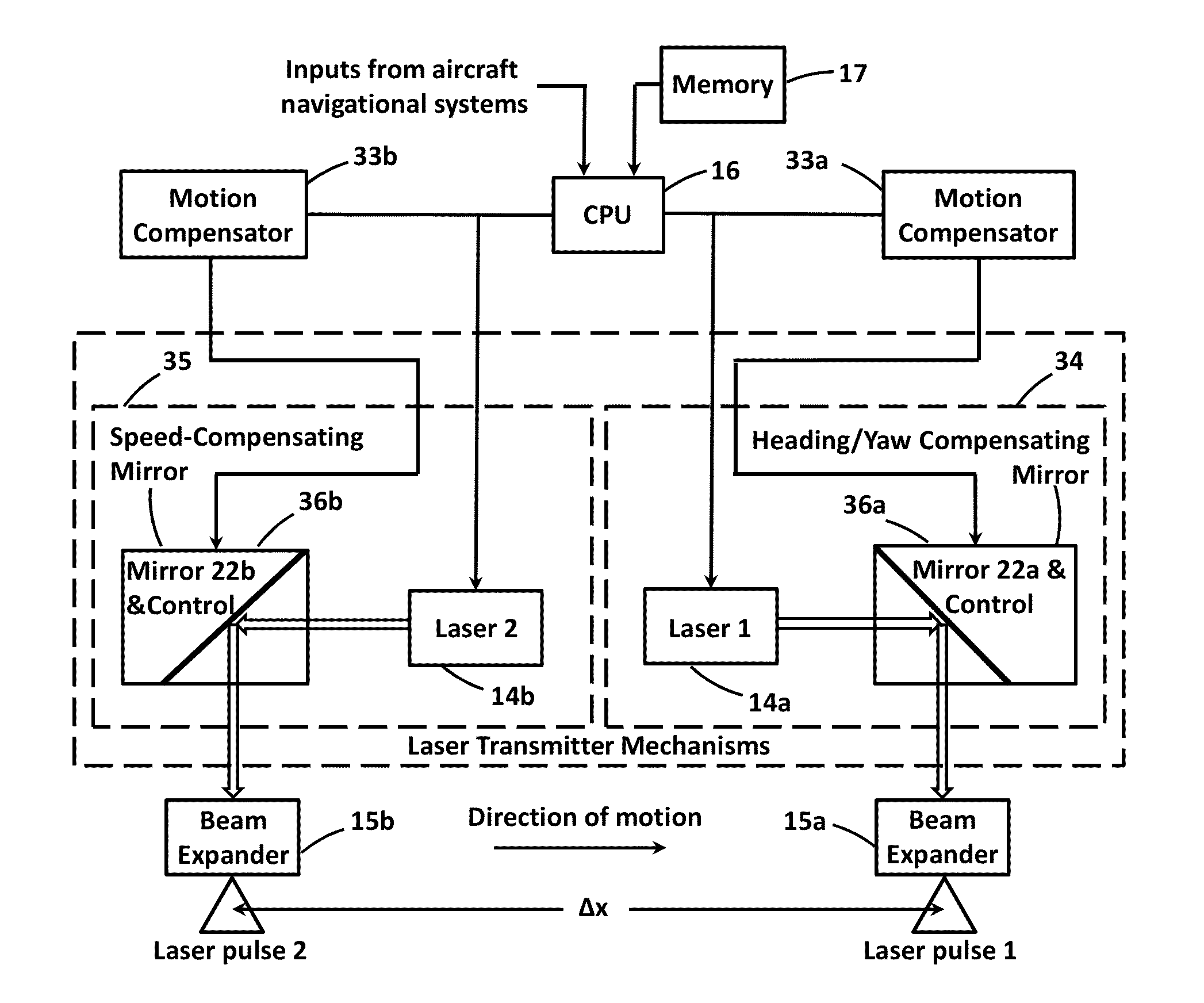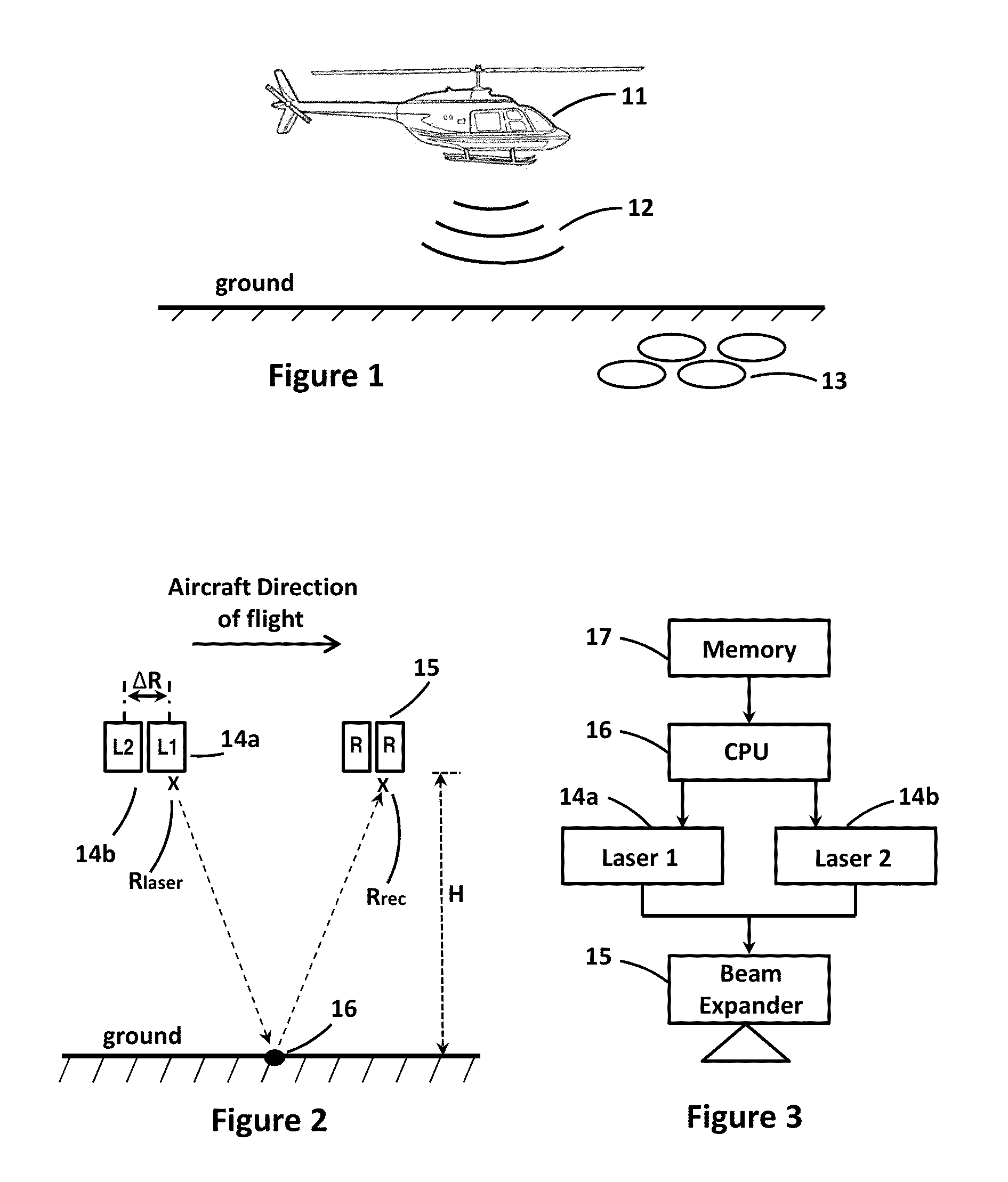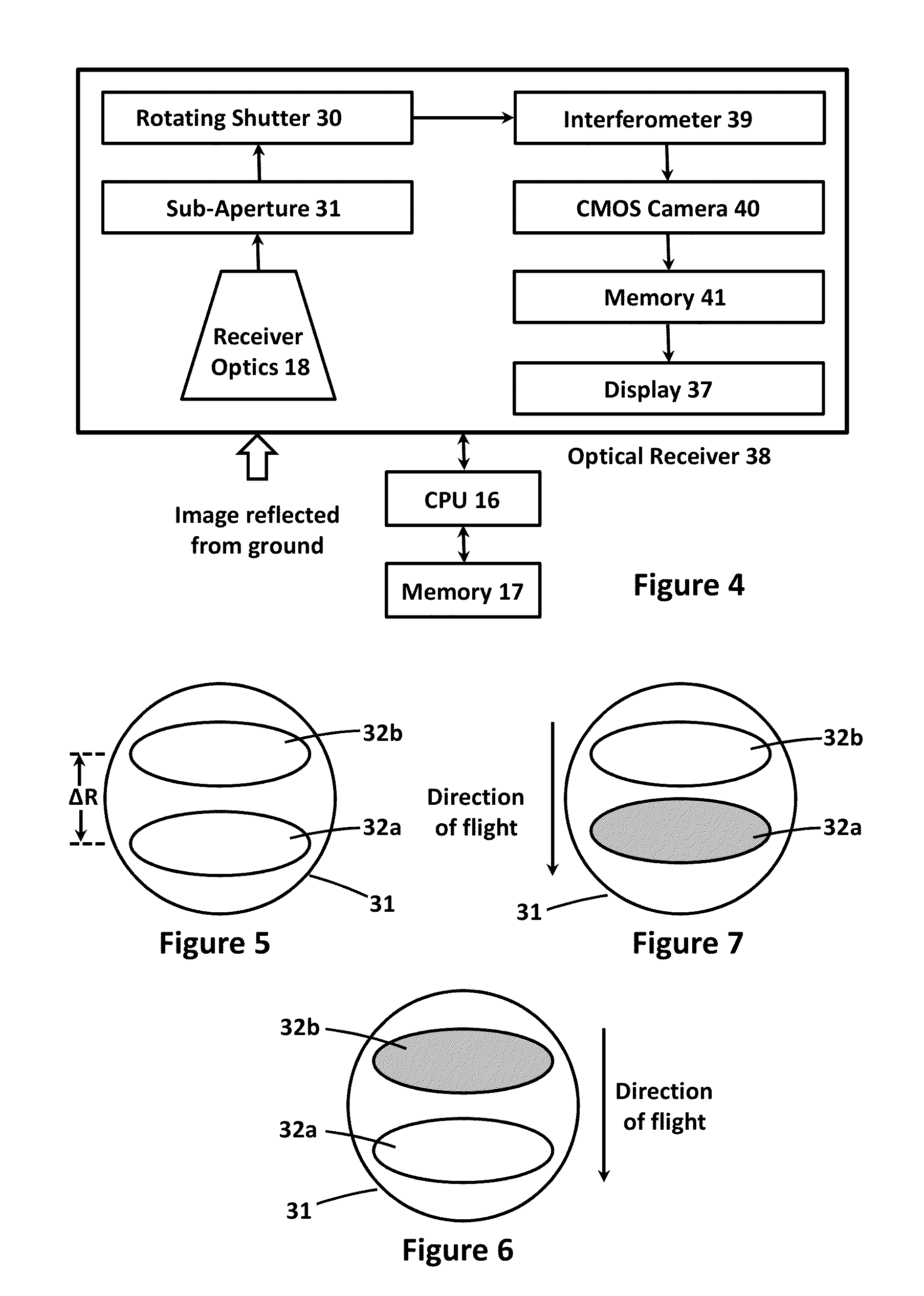Compensating aperture for utilizing shearography from a moving platform
a technology of moving platform and compensating aperture, which is applied in the field of remote detection and imaging systems, can solve the problems of partial or complete loss of contrast of shearogram fringes, and achieve the effects of strong noise, low contrast, and removal of speckle nois
- Summary
- Abstract
- Description
- Claims
- Application Information
AI Technical Summary
Benefits of technology
Problems solved by technology
Method used
Image
Examples
Embodiment Construction
[0037]FIG. 1 shows an aircraft 11 moving to the right above the ground while transmitting a high intensity sound signal 12 toward the ground. Sound signal 12 is utilized to cause sufficient vibration deformation of the ground required for moving shearography to operate. The frequency of the sound is selected to cause the greatest vibration. Buried in the ground are anomalies 13 that may be, for example, archaeological remains. Aircraft 11 preferably flies at an altitude between 100 feet and 500 feet at a speed of 40 mph. However, the altitude and speed may be varied, along with other operating variables, for specific applications. Sound signal 12 will typically be transmitted toward the ground at an intensity of 150 decibels, or at another intensity level so that at ground level the sound intensity is in the order of 120 decibels. The intensity level may be varied, depending on the makeup of the ground, to provide the vibration deformations of the ground required for the moving shea...
PUM
 Login to View More
Login to View More Abstract
Description
Claims
Application Information
 Login to View More
Login to View More - R&D
- Intellectual Property
- Life Sciences
- Materials
- Tech Scout
- Unparalleled Data Quality
- Higher Quality Content
- 60% Fewer Hallucinations
Browse by: Latest US Patents, China's latest patents, Technical Efficacy Thesaurus, Application Domain, Technology Topic, Popular Technical Reports.
© 2025 PatSnap. All rights reserved.Legal|Privacy policy|Modern Slavery Act Transparency Statement|Sitemap|About US| Contact US: help@patsnap.com



